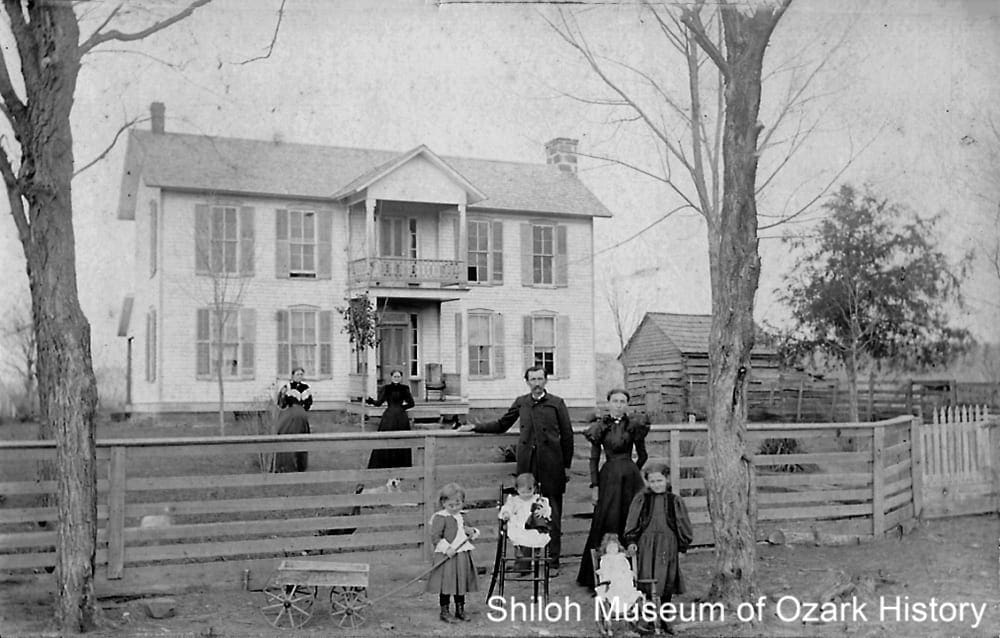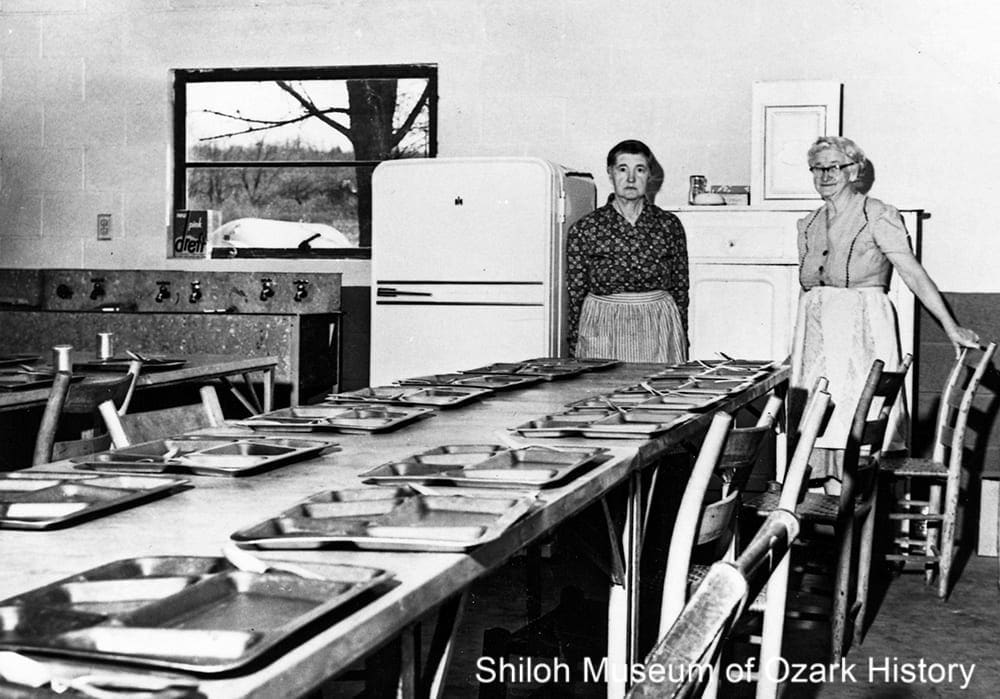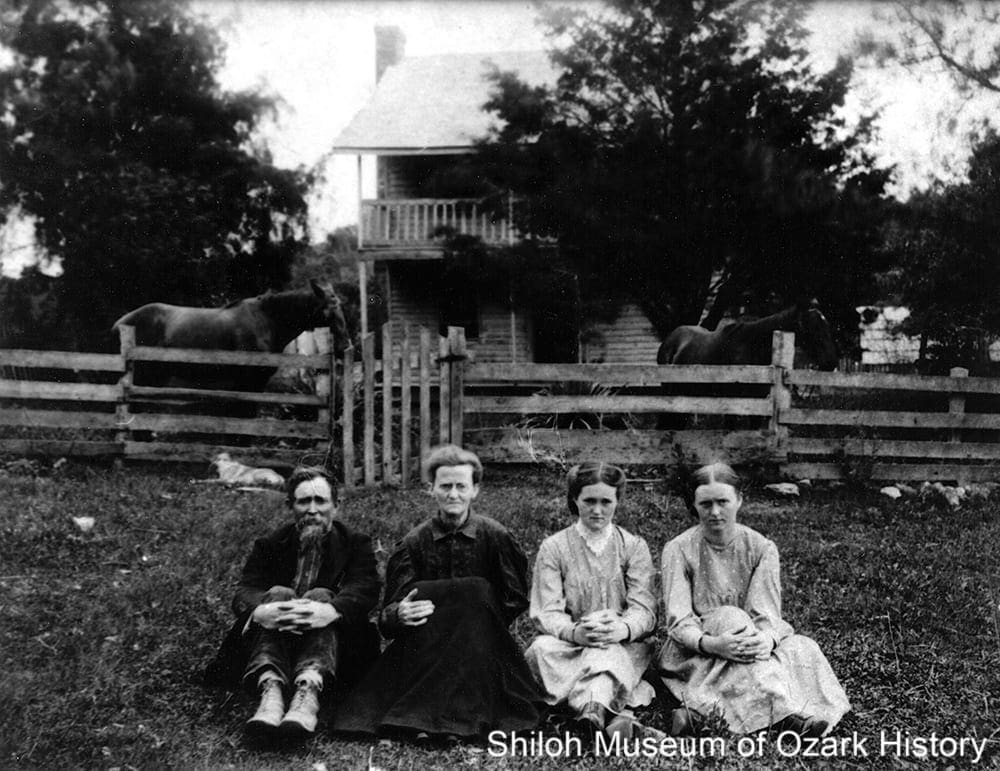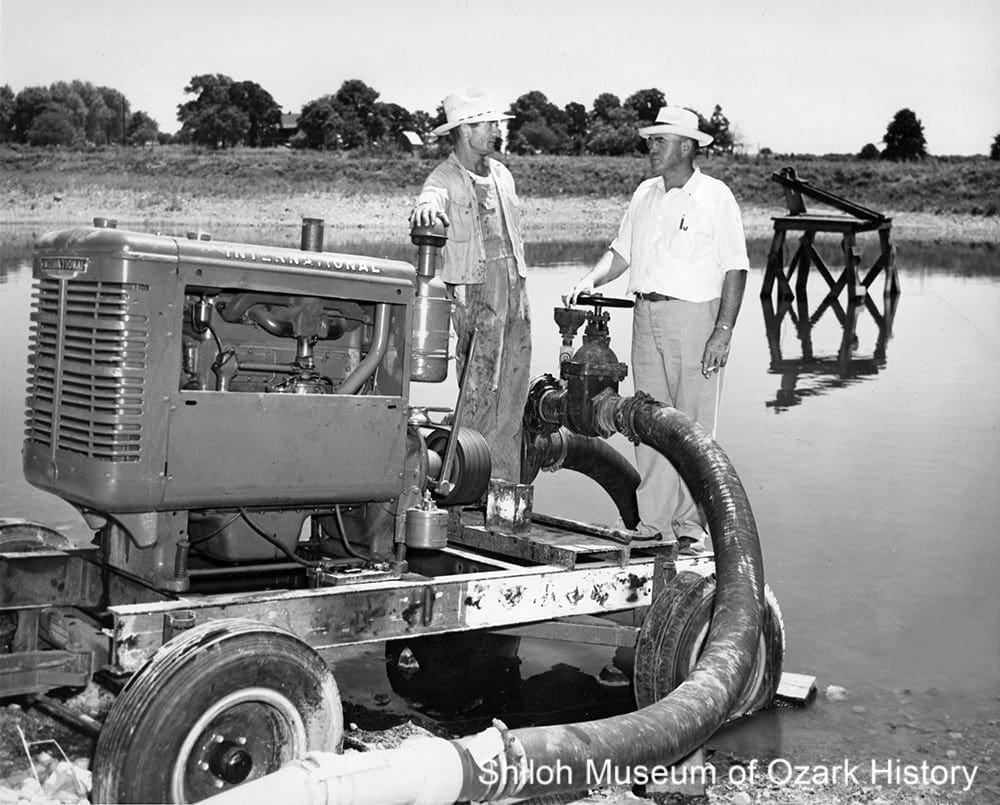Frisco Railroad coaling tower at Fayette Junction, a switchyard that was located near the present-day intersection of Cato Springs Road and Vale Avenue in south Fayetteville, early 1900s.
Coaling towers were a necessary fixture along railroads during the era of coal-powered steam locomotives. Coal was carried on the train in a special car called a “tender.” When the tender needed to be refilled, the engineer positioned the train so that the tender was parked under the tower chutes at the coaling tower. The chutes were then lowered and coal was released into the tender. In the 1950s, diesel replaced coal as the fuel of choice for locomotives, and coaling towers fell out of use.
Virginia Threet Collection (S-88-156-11)






